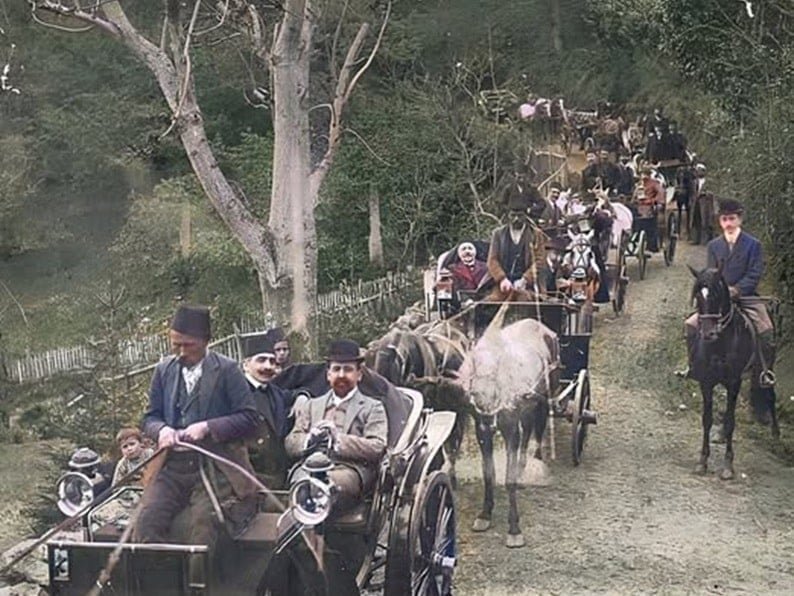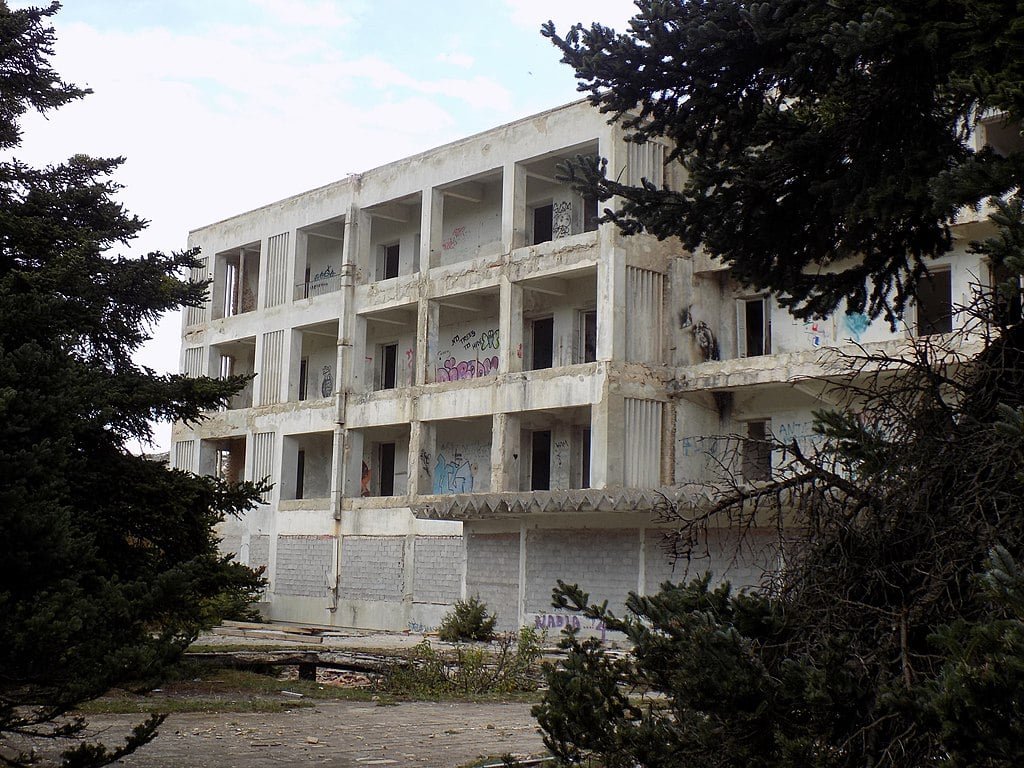
This remarkable photograph captures a scene of leisure and wealth, reflecting the dominant economic position held by the Greek community of Trabzon in Pontus, in the 19th or early 20th century.
It is not just a picture of people traveling; it is a visual document of a prosperous, cosmopolitan class enjoying the benefits of their commercial success in the strategic Black Sea port.
The excursion of the affluent Greeks of Trabzon
The image shows a large group engaged in a relaxed excursion along a tree-lined road outside the city center. The procession is dominated by horse-drawn carriages and phaetons. This choice of transport speaks directly to wealth, indicating that these individuals were not simply walking or riding on modest animals but owned or hired the finest vehicles available at the time.
The journey itself implies a leisure activity—traveling to villas or countryside estates—that was exclusive to the upper class.
The clothing immediately identifies the subjects as a sophisticated urban elite. The men are predominantly dressed in Western-style suits, often paired with homburgs or boaters, a style popular across European cities and adopted by the mercantile classes throughout the Ottoman Empire. This fashionable attire signals their connection to international trade and culture, distinguishing them from the more traditional dress of the rural populace.
Greek community in Pontus was forged by commerce
The people shown in the photo were the beneficiaries of Trabzon’s status as the key transit hub for trade between Europe and Persia. The Greek (and Armenian) families controlled the banking, shipping, and import/export businesses that generated enormous fortunes.
By the early 20th century, the Greeks of Trabzon were prominent not just in commerce but also in the financial sector. Of the five banks operating in Trabzon, three were owned by members of the Greek community, including the banks of Theofylaktos, Kapagiannidis, and Fostiropoulos. The fourth was a branch of the Ottoman Bank, and the fifth was a branch of the Bank of Athens.
Wealthy Greek bankers and merchants were responsible for constructing some of the city’s most impressive buildings, such as the famous Atatürk Kiosk, which was originally the villa of wealthy banker Konstantinos Kapagiannidis.
The wealthy Greek elite

The existence of such a large, organized procession for a social outing underscores several points: It demonstrates the sheer size and social cohesion of the wealthy Greek elite who possessed the means and time for group leisure activities.
This conspicuous display of wealth—a line of carriages and well-dressed people—was a public assertion of their social and economic status within the city.
Their adoption of European fashion and leisure habits highlights their cultural outlook, which was closely linked to the European trading partners with whom they did business.
In essence, this photograph vividly confirms the historical accounts: the Greeks of Trabzon were a highly successful merchant class who utilized the city’s geographic advantage to accumulate vast wealth, creating a vibrant, yet ultimately fragile, economic cornerstone of the late Ottoman Black Sea region.
However, while the Greek community of Trabzon was wealthy as a group compared to their Turkish neighbors, not all Greeks in the region were rich; there was still a population of poorer Greeks, particularly in the mountain villages of the Pontic Alps.
Related: Santa: The Ruins of the Deserted Greek Town in Pontus


